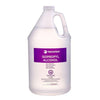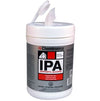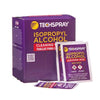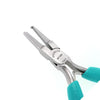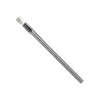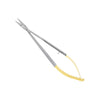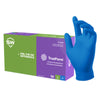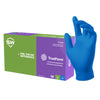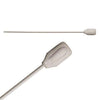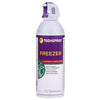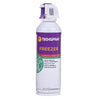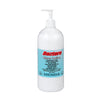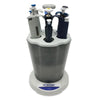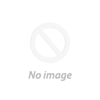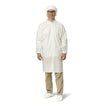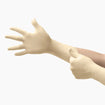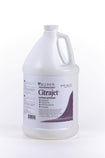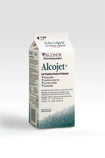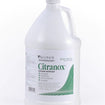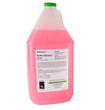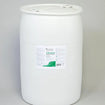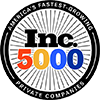- No products in the cart.
What Is The Proper Deionized Water Conductivity Range?
Jun
13
2020
Introduction
Deionized water is important in cleaning because it contains very small concentrations of ions and thus it can be used to clear contaminants and undesirable compounds. Most water will have at least some concentrations of cations and anions which could disrupt an experiment or an industrial process. As a result, deionized water is commonly used in labs for cleaning and removing contaminants in both research and industry contexts. Water can be considered deionized when it is below a certain conductivity range which makes it important to know the proper conductivity range in order to make deionized water that is effective in its use.
Problem of impurities in water
Water in natural settings will always have impurities. Water in the oceans, rivers, or ground water will interact with rocks and minerals and will pick up ions from the surrounding environment.
These ions can complicate laboratory procedures both in industrial contexts and in research contexts. Water, however, is still very important in science and industry, so a way must be found to ensure that this does not interfere with laboratory and industrial processes.
Types of water
To deal with this problem, most laboratories will use water that has been modified or purified in some way to remove the impurities that naturally build up in the water as it travels through the soil and over the solid surface of the planet.
There are essentially three types of water that are used in laboratory contexts, tap water, distilled water, and deionized water:
- Tap water
Tap water is the same as water that is used for everyday purposes. Its purity does not usually differ significantly from natural sources of water. This means that it will contain the chemical impurities which interfere with laboratory experiments and processes.
2.Distilled water
Distilled water is water that has been purified through the process of distillation in which the water is boiled and the re-condensed so that all the impurities that don’t evaporate with the water get left behind.
Although distilled water removes most of the impurities, it does not remove all the ions still in the water. The purest form of water is water that has been purified through the process of de-ionization.
- Deionized water
De-ionized water is made by using special resins to remove the cations and anions in the water. Anion resin is positively charged and attracts the anions. Cation resin is negatively charged and attracts the cations. The resins are used to exchange the cations and anions with H+ cations and hydroxyls which combine to create neutral H2O.
In solid materials, electrical conductivity is primarily dependent the number of electrons. The more electrons there are in a situation, the higher the conductivity levels will be. In liquids with dissolved ions, conductivity can also be strongly dependent on the concentration of ions.
It is not possible to remove all ions from water so even extremely pure water will still contain very small concentrations of ionic impurities. Because of this, water will always have some conductivity.
There is, however, a conductivity below which the concentrations of ions are small enough that the water is effectively pure and the ions within it do not affect the waters ability to remove contaminants. Conductivity levels need to be below a certain threshold in order for water to have a small enough concentration of ions to be considered de-ionized.

RICCA WATER D.I.(Deionized Water) Water, ACS Reagent Grade, ASTM Type I, ASTM Type II
Deionized water grades
According to International Organization for Standardization (ISO) standard 3696, there are three grades of de-ionized water. These are the conductivity values for each.
- Grade 1: 10-7 S/m
- Grade 2: 10-6 S/m
- Grade 3: 5 • 10-6 S/m
The de-ionized water increases in quality with lower conductivities though higher grade de-ionized (DI) water will be more expensive and will take more time and energy to produce.
Discussion
In conclusion, the proper conductivity range for DI water is typically ≤ 5 • 10-6 S/m. Both cost and suitability are factors are important. If contaminants can be removed from a lab with fairly low grade, in expensive DI water, it would be better to do so especially since DI water is very susceptible to being contaminated and has to be very carefully sealed off from any possible source of contamination prior to use.
For example, high quality de-ionized water would not be useful for washing a lab bench because, as soon as it was exposed to the air, it would be contaminated and no longer have the special properties of high grade de-ionized water. It would be no better than tap or distilled water or de-ionized water of a lower grade. At that point, you might as well just use tap or distilled water in order to cut down on expenses.
If a facility does not require very high-grade DI water to clean the facility, it might be better to simply use lower grade DI water that has more contaminants but still does the job to save money. High grade DI water should only be used if necessary.
Therefore, best conductivity range would also depend on the cost needed to distill higher grades of DI water and how often these higher grades need to be used. As a result, there is no proper conductivity range for all cases as long as the conductivity is below the threshold for water to be considered de-ionized.
Conclusion
Deionized water is water where all of the impurities have been removed by absorbing the anions and cations with a special resin to create a highly purified form of water. It is purer than tap water or distilled water and is in demand for use in cleaning laboratories. The conductivity range of deionized water generally has to be very low. The maximum conductivity range for deionized water is ≤ 5 • 10-6 .
For over 40 years, Lab Pro has been committed to delivering the highest quality chemicals, reagents, and cleaning solutions to medical and biotechnical laboratories worldwide. Come visit the biggest Lab Supply showroom in the California, or contact us online or at 888-452-2776.
References:
http://www.circuitnet.com/experts/59891.html
https://puretecwater.com/deionized-water/what-is-deionized-water
https://puretecwater.com/deionized-water/laboratory-water-quality-standards
https://www.lenntech.com/applications/ultrapure/conductivity/water-conductivity.htm
https://www.thoughtco.com/distilled-versus-deionized-water-609435
https://www.thoughtco.com/what-is-distillation-601964
https://www.thoughtco.com/how-safe-is-tap-water-1204039
https://www.thoughtco.com/definition-of-electrical-conductivity-605064







